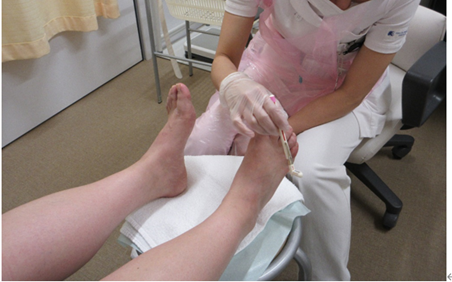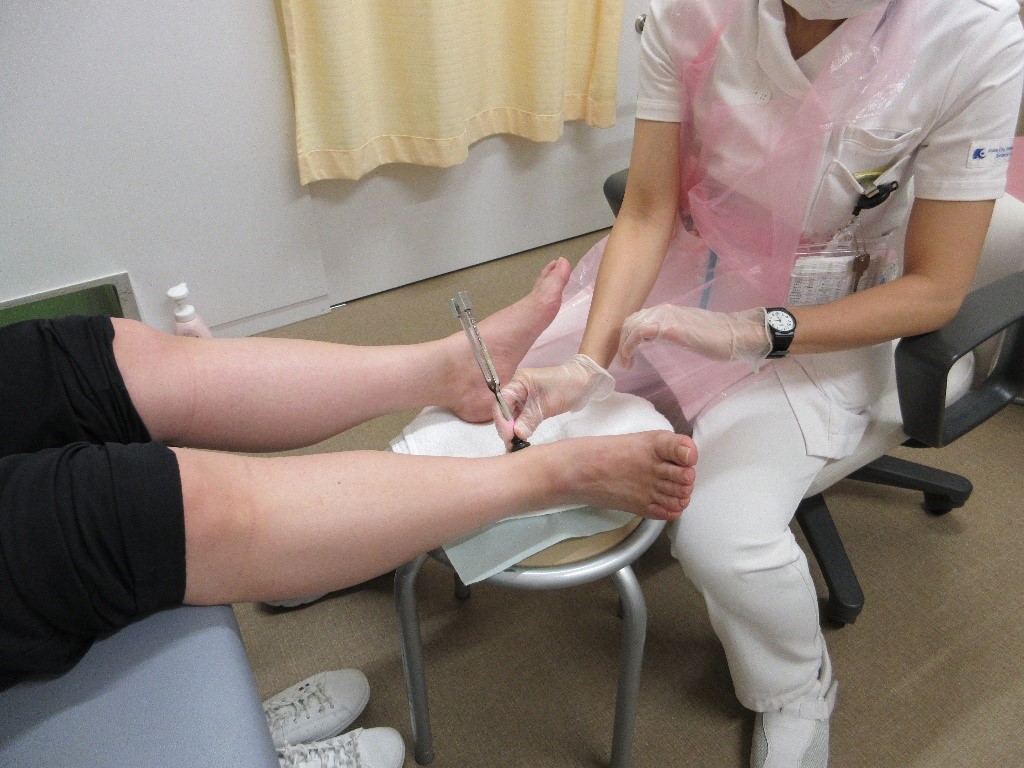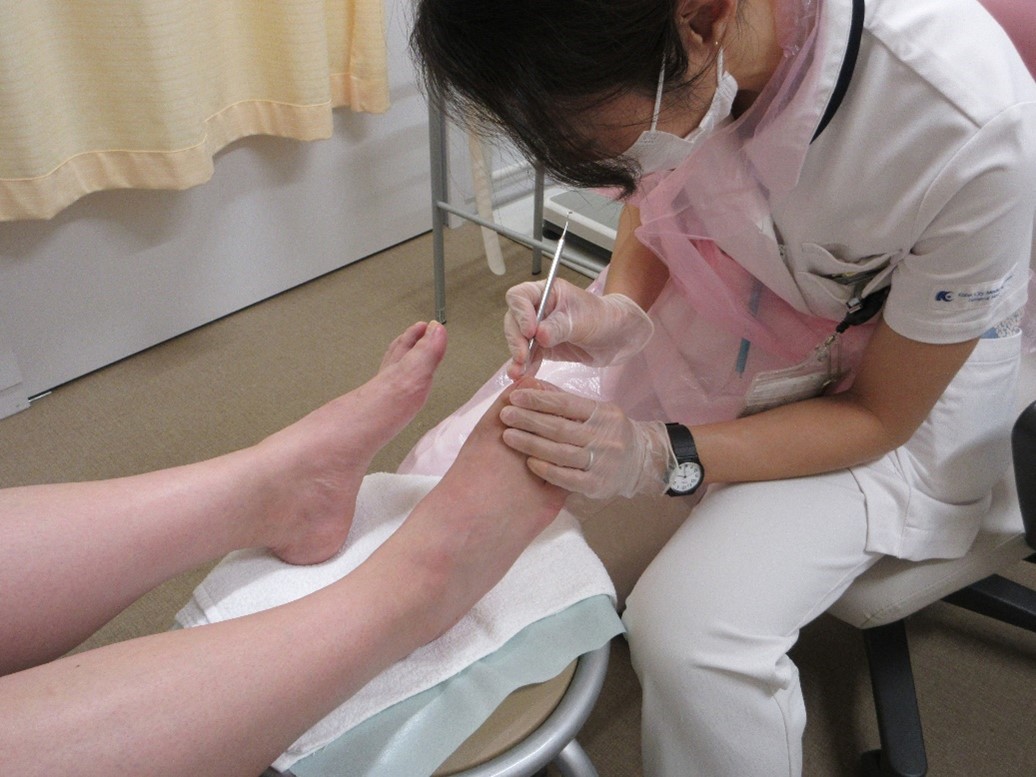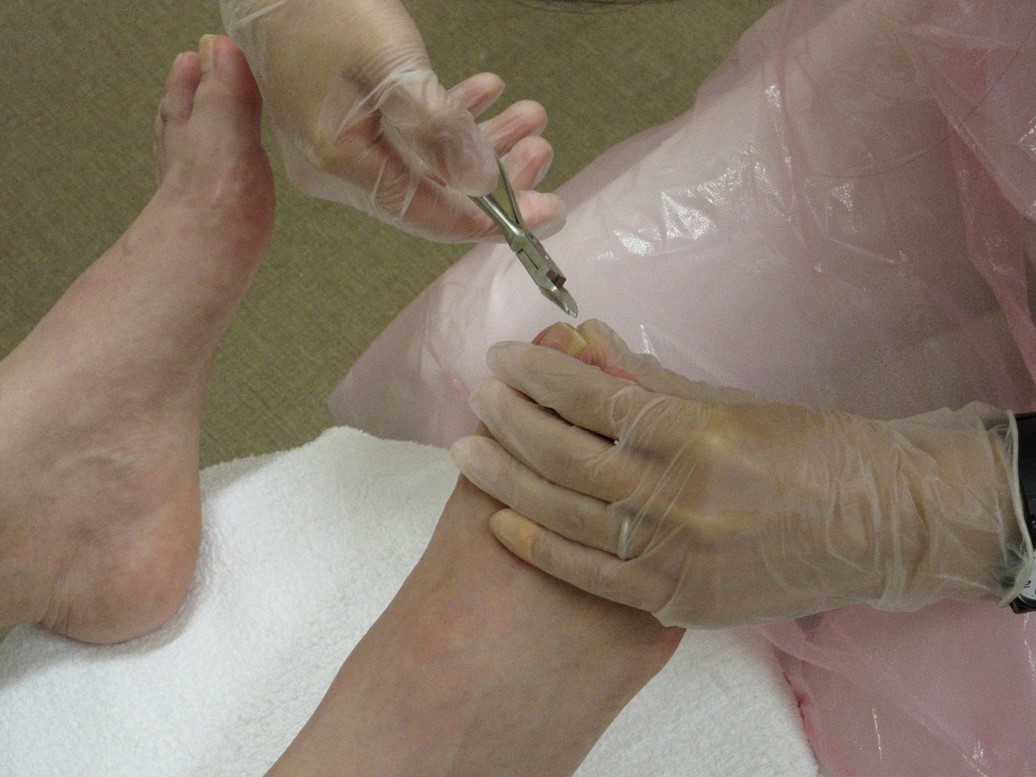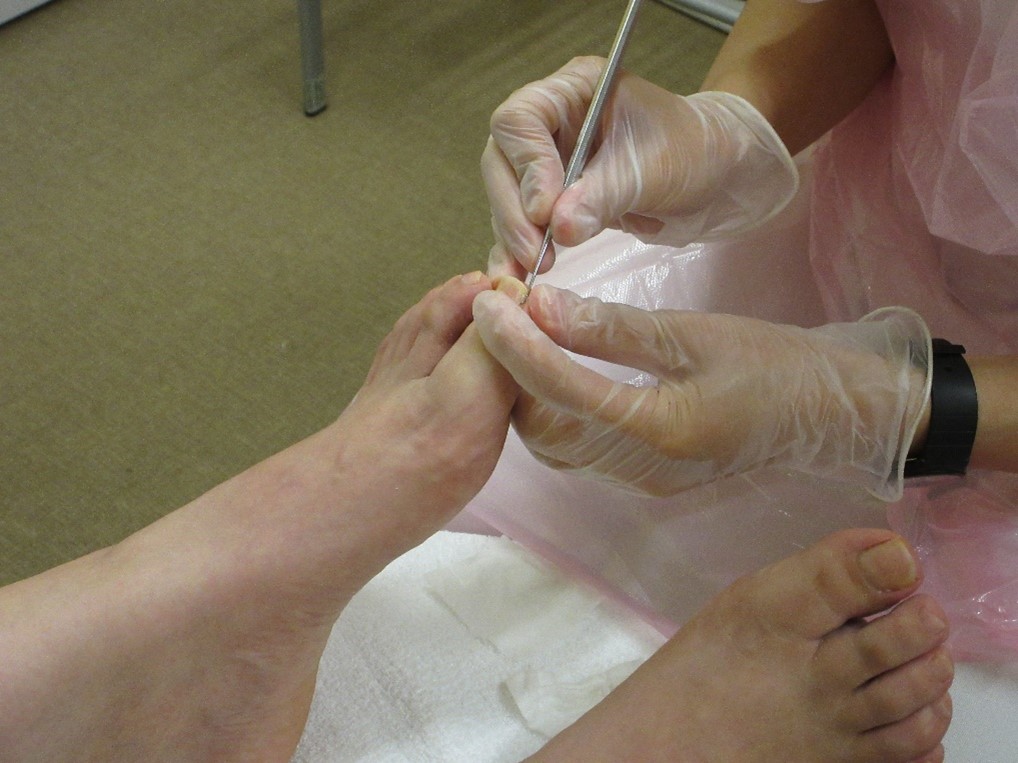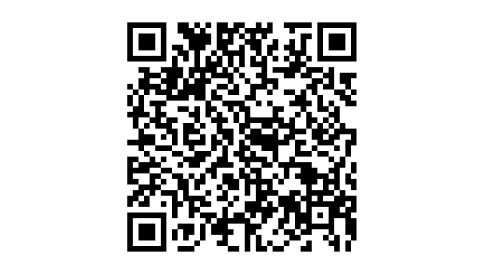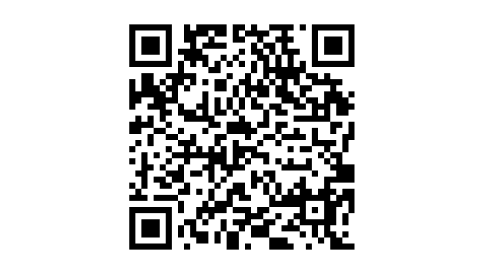フットケア外来のご紹介
| 外来日 | 第1~第4金曜日 9:00〜15:00 |
|---|---|
| 予約 | 完全予約制 1人30分 |
| 診察室 | 2階外来Cブロック 心臓センター外来 C298診察室 |
| 予約方法 |
|
| 対象患者 |
当院通院中の糖尿病患者さんで、下記の診断がなされている方
|
| フットケアの内容 |
|
| 担当者 | フットケア研修を修了した外来看護師 |
実際のフットケアの流れ
1.足浴
5~10分間、足浴をします。足浴には、血行促進、リラックス効果などがあります。足浴をしながら、体調のこと、日々の療養のことなどお話を聴かせていただきます。
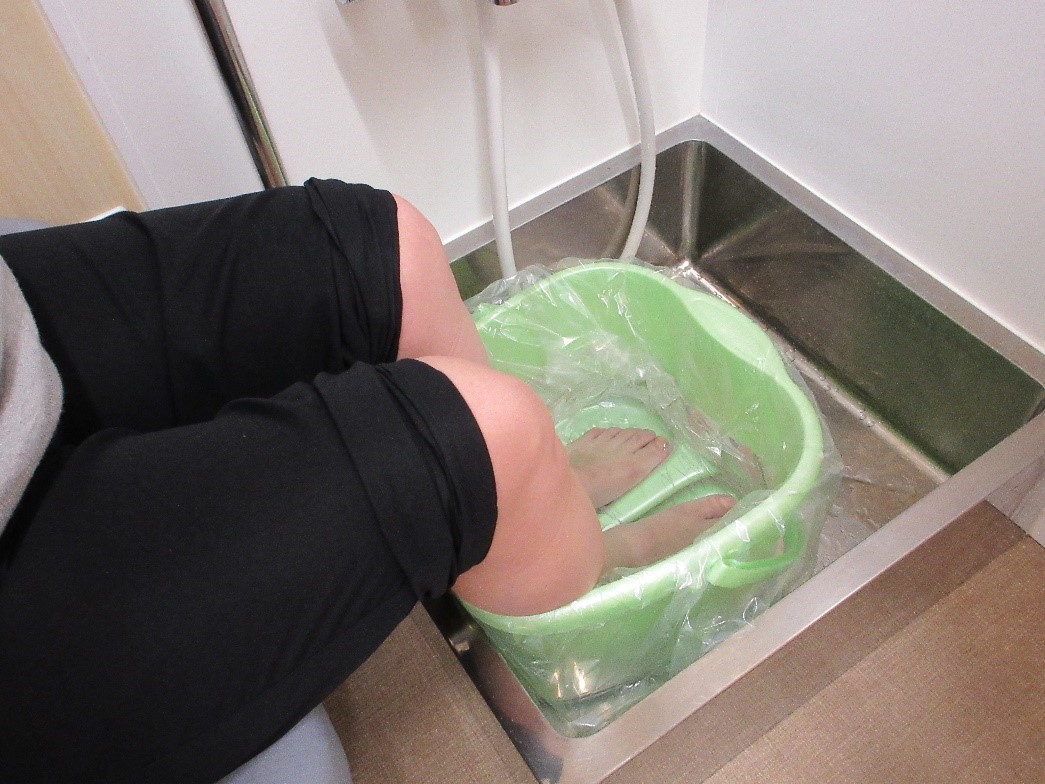
2.洗浄
足を石鹸できれいに洗います。清潔が第1です。
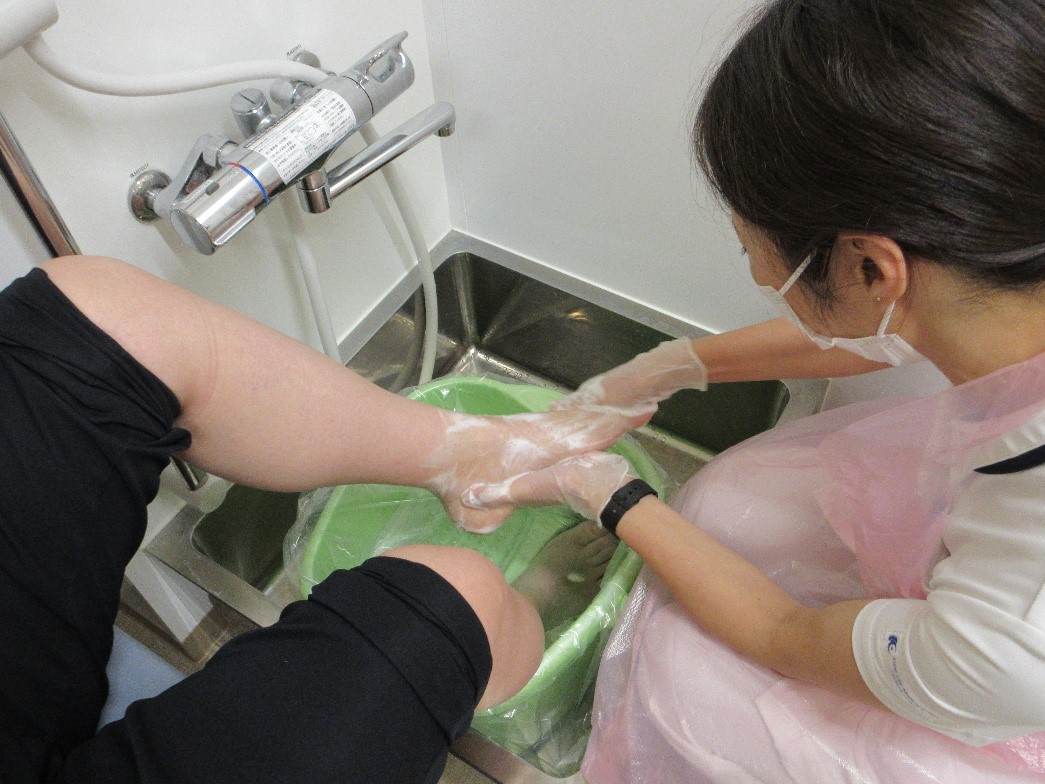
3.足の血流の確認
足の甲や踝のあたりにある血管を触ります。ドクドクと血液の拍動がわかりにくい場合は、ドプラーという機械を使用して、足の血液の流れる音を聴きます。
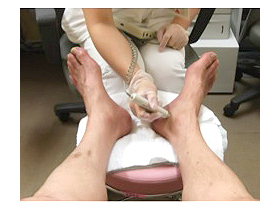
4.触覚、圧覚、振動覚などの足の感覚のチェック
足のしびれがないか確認し、タッチテスト(モノフィラメント)や音叉を使用して、足の感覚をチェックします。
5.足の観察
足を触り、観察します。胼胝(タコ)や傷、爪が肥厚、履いている靴や靴底や中敷の消耗などを見ます。小さな足の変化でも気づいたことはすべてお伝えし、傷にならないような方法を一緒に考えます。
6.爪切り
ニッパーで爪切りをします。深爪にならないように気をつけます。
7.胼胝削り
コーンカッターで胼胝を削ります。
8.保湿
仕上げに保湿クリームを塗ります。
9.フットケア教育
足の洗い方、爪きりの方法(長さ)、保湿、靴下の着用など、患者さんの生活に合わせた足のケアの方法をお伝えします。
